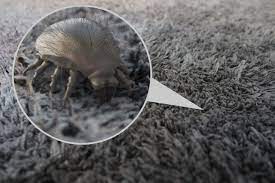Mites
Mites (Acari) are a group of members of the kingdom Arachnida, which means they are related to spiders and stingers. They are microscopic or small arthropods that have many species and live in a large number of different environments.

Mites have very diverse properties and functions, and their biology includes different aspects:
Size: The sizes of mites are very diverse. Some are microscopic, while others can be up to several millimeters in size.
Biology: Mites have a body divided into two parts: the prosoma (head part) and the opisthosoma (rest of the body). Most species have 4 pairs of legs, which is remarkable for the Arachnida group.
Habitat: Mites are found in a wide range of environments, from soil and leaf litter to aquatic ecosystems and on living organisms. Some species are parasites, others are saprophages (feed on decaying organic material) and others are predators.
Nutrition: Their diet depends on the species. Some types of mites feed on the blood or body fluids of the host (ticks are a key example), others consume plant tissue, microorganisms or decompose organic material.
Significance: Some mites may have important ecological functions, such as in the decomposition of organic matter, thus contributing to the nutrient cycle in nature. However, other species are considered pests because they can attack crops, transmit diseases or cause allergies in humans.
Allergies: Some people are allergic to the proteins contained in the excrement or body fluids of certain mites, especially dust mites in households. These allergies can trigger various health problems, such as hay fever or allergic asthma.
Thus, mites are a diverse group of arthropods that play various roles in ecosystems and are also important in medicine and households.
